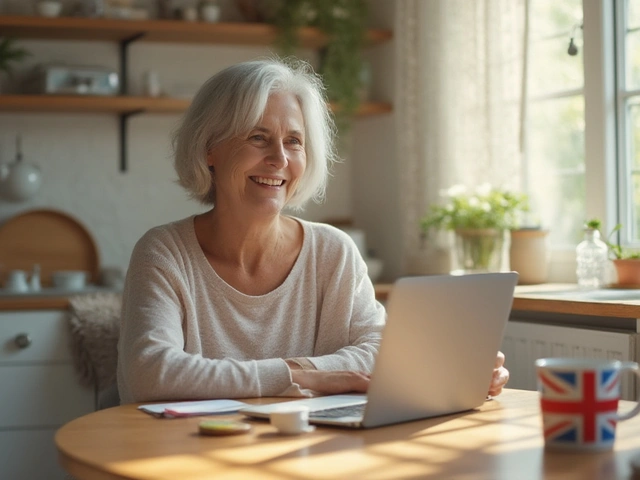Why Do Some Tumors Grow Like Lightning?
You might think cancer is just cancer, but it’s a world of difference between a slow, lurking tumor and something that takes off like a wildfire. Some tumors double in size within weeks. Others drag on, barely moving for years. It’s all about how fast their cells divide. The speed isn’t random, either—some cancers, like certain leukemias, aggressive lymphomas, and small cell lung cancer, are notorious for rapid turnover. That means more symptoms, tougher battles, but also a catch: these quick-growers can be especially vulnerable to therapies that target their main superpower—speed. If you want to see the wildest and scariest numbers, check out these fast-growing tumors and their real-world growth rates. Worth a look if you want to understand what’s really going on beneath the microscope.
What makes these cells so fast? It’s not just luck. Most rapidly dividing cells have certain genes cranked up—think of them like drivers always pressing the gas pedal to the floor. And while that sounds bad, it’s actually a weakness. Treatments can go after the very machinery that lets these cells run amok, while (hopefully) sparing slower, normal cells. Here’s the paradox: tumors that grow the fastest often respond the best to certain therapies, at least in the beginning, because their wild cell cycles make them easy targets—until they find ways to dodge treatment, which they usually do if given enough time. That’s the main challenge for researchers today: how to stay one step ahead.
But, and it’s a big one, normal body cells that divide quickly (like those in your gut, bone marrow, and hair follicles) also get caught in the crossfire. That’s why side effects like nausea, low blood counts, and hair loss happen often. Modern strategies are all about sharpening the aim—hitting tumor cells harder and leaving healthy ones alone. It’s about time, right?
The Old Guard: Chemotherapy’s Double-Edged Sword
Chemotherapy has been around since the 1940s, originally discovered almost by accident. The logic back then was simple: poison all dividing cells, fast or slow, and hope the cancer dies before the person does. As brutal as it sounds, in certain cases like childhood leukemias or testicular cancer, it works—sometimes even cures. Agents like cyclophosphamide, doxorubicin, and cisplatin have been the backbone of many regimens. They mess with DNA synthesis, stop cells from copying themselves, or just blow up rapidly dividing cells altogether.
But here’s the problem—chemo can’t tell cancer from healthy tissues where cells naturally divide fast. That’s why the short-term misery: you get nausea, you lose your hair, your immune defenses drop off a cliff. There’s a reason chemo can scare even the toughest people. But some advances have made this landscape a bit kinder. Doctors now use growth factor injections to help bone marrow recover. Special antiemetics keep you from being glued to the bathroom floor in misery. And there’s “dose-dense” chemo—giving smaller amounts more often—which actually works better for some rapidly dividing tumors and leads to fewer crashes between cycles.
Sometimes, combining drugs is the magic ticket. Using two or three agents that work in different ways means cancer cells have a much harder time escaping destruction. For example, modern protocols like R-CHOP (for non-Hodgkin lymphoma) mix traditional chemo with targeted agents, balancing heavy artillery with precision strikes. Timing is key, too. In certain blasts of acute leukemia, treatment starts within days of diagnosis—no time to waste before those cells explode out of control. In short, the old warhorses of chemotherapy are far from gone, but the ways they’re used keep changing, all aiming for the sweet spot: maximum cancer kill, minimum pain.

The Rise of Targeted Therapies: Sharper Than Ever
This is where things get futuristic—targeted therapies use knowledge of cancer’s molecular quirks to attack with sniper-like accuracy. Not every rapidly dividing tumor has the same weak spot, though. Things like receptor tyrosine kinases, abnormal enzymes, or mutated proteins drive specific cancers to multiply out of control. Modern drugs home in on these drivers like a cat after a laser pointer (if you’ve seen Whiskers, you know what I’m talking about).
Take chronic myeloid leukemia (CML) as a poster child. Tyrosine kinase inhibitors like imatinib changed the game—suddenly, a disease that used to kill in months could be controlled for years or even decades with a daily pill targeting just one engine of division. Non-small cell lung cancer? If you’ve got the EGFR mutation, pills like osimertinib work wonders where chemo falls short. Breast cancer with HER2 amplification? Drugs like trastuzumab block those signals directly on the cell’s surface, starving tumors that depend on them.
What’s wild is how fast this area grows. Antibody-drug conjugates (ADCs) are a fresh twist: lab-made antibodies find the tumor cell, then carry a toxic payload directly inside—like a targeted missile, less friendly fire. Many solid tumors that used to have few options, like triple-negative breast cancer, suddenly have new therapies in clinical trials. Even more exciting? Researchers are stacking these drugs in combination, hitting tumors with different targeted agents, and finding new cracks in cancer’s armor every month. The old image of cancer therapy being nothing but side effects is fading, replaced with hope for smarter, tailored strikes.
Cell Cycle Inhibitors and Experimental Weapons
Here’s the cool part—the very thing that lets cancer cells outpace normal ones, their cell cycle, is now a playground for researchers. CDK4/6 inhibitors are shining examples in hormone-positive breast cancer. Drugs like palbociclib literally pull the brakes on the cell cycle. Suddenly, cells that used to zoom through division get stopped cold, making standard endocrine therapy way more effective. For certain tumors, the difference with these drugs can mean years of extra life.
PARP inhibitors are another clever move. They trap rapidly dividing cells by damaging their DNA beyond repair, especially useful in cancers with BRCA mutations (like some breast, ovarian, and prostate cancers). Your normal cells can usually fix these kinds of problems, but cancer cells racing ahead at top speed just pile up errors—and die off. There’s even buzz about synthetic lethality combinations, where two targeted therapies cripple cancer from different angles, leaving the tumor nowhere to go. It’s still early days for some combos, but the theory has already delivered real survival gains in the clinic.
For even more reach, researchers are turning to the immune system. Immunotherapies like checkpoint inhibitors don’t kill rapidly dividing cells directly—but they help the body’s own defenders see the tumor as the enemy. That can lead to long, durable responses, especially in cancers that mutate fast (since those tend to make lots of weird proteins the immune system can spot). CAR-T cell therapies are another wild card: they reprogram a patient’s own T-cells to attack cancer with specific targets, showing almost science fiction-level remissions in some blood cancers. The fun part? These tricks might get combined with traditional cell cycle blockers or targeted drugs, opening up a whole menu of attack strategies for cancers that refuse to play fair.

Making the Most of a Breakthrough: Tips for Patients and Caregivers
So, what does this explosion of new therapies mean when you’re the one facing a diagnosis? First, don’t assume there’s only one way to fight a fast-growing tumor. Ask your oncologist about molecular testing, which can unmask specific targets in your cancer that new drugs can exploit. If you’re offered a spot in a clinical trial, it might mean early access to cutting-edge therapies not available elsewhere. A surprising number of breakthroughs come from patients willing to try something new under careful supervision.
Monitor side effects closely, especially with the latest drugs. While most people worry about the big, classic toxicity symptoms (nausea, hair loss, low blood counts), newer targeted therapies have their own quirks—think heart issues with some HER2 drugs, or odd rashes and diarrhea from EGFR inhibitors. Regular bloodwork and honest symptom reports are your best defense. Don’t go it alone: online support groups and advocacy resources can connect you with others on the same journey and keep you up to speed on the latest research.
There’s a side tip most people don’t hear: talk openly about mental health. The shock of a rapidly growing tumor can knock anyone off center, and it’s easy to get stuck in a cycle of Googling worst-case scenarios at 2 a.m. (Trust me, Whiskers has seen me do it more than once.) Many cancer centers now offer dedicated psycho-oncology teams—use them. And yes, cutting-edge therapies are becoming available in more countries every year, not just big city hospitals. If you hit a roadblock, ask for a second opinion or help with referrals. You deserve every advantage that modern science can offer against fast-moving targets.
Finally, don’t underestimate the power of the basics: healthy sleep, some movement, and eating what you can tolerate. Rapidly dividing tumors burn energy fast, and so do their treatments, so keeping your body fueled while you fight helps more than it seems. And if you or a loved one gets news that treatment isn’t working, remember there are new drugs coming out all the time—ask about off-label use or expanded access programs. The world of breakthrough therapies for rapidly dividing cells is only growing faster. Hang in there; new hope really could be right around the corner.





Comments (11)